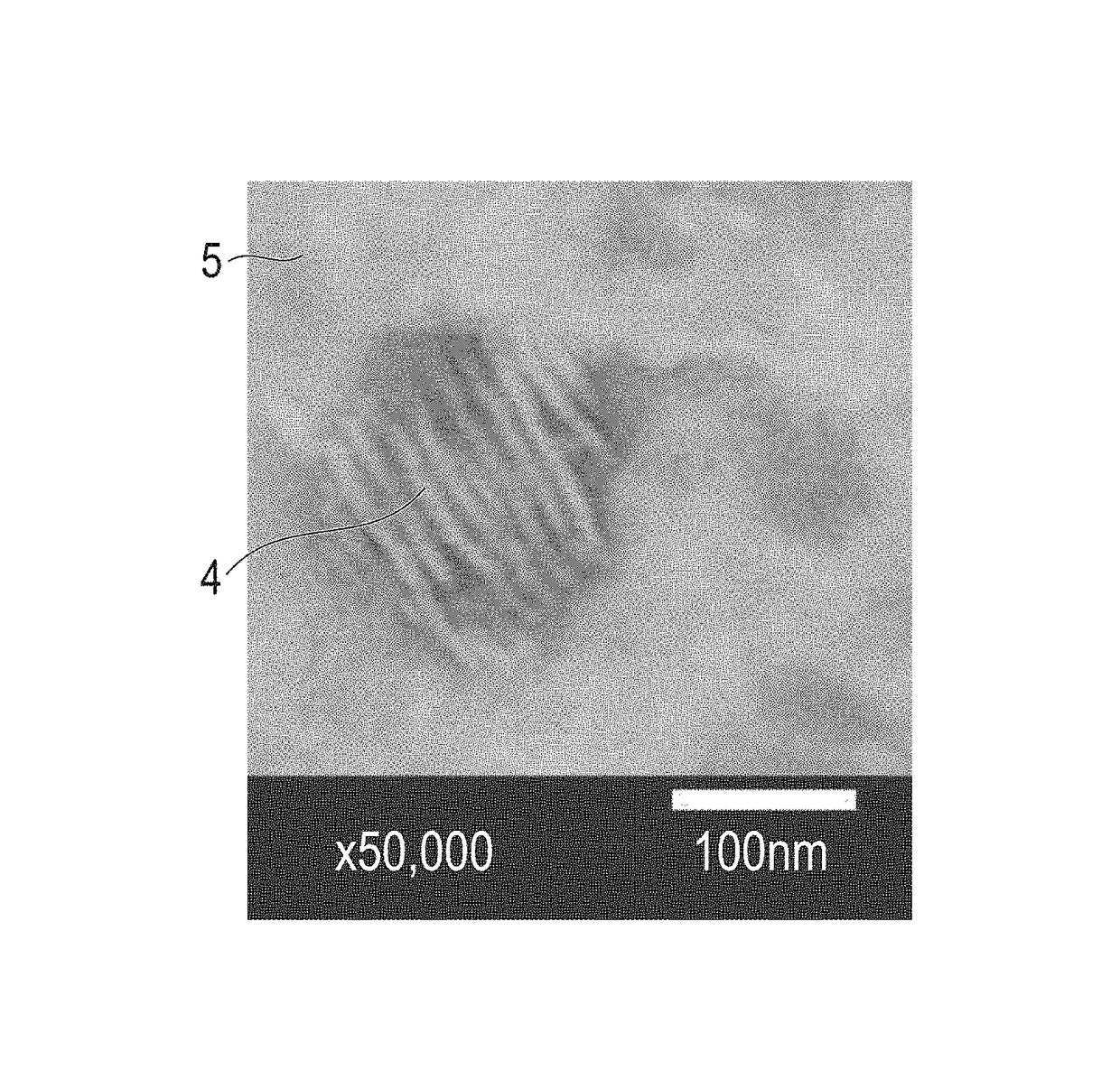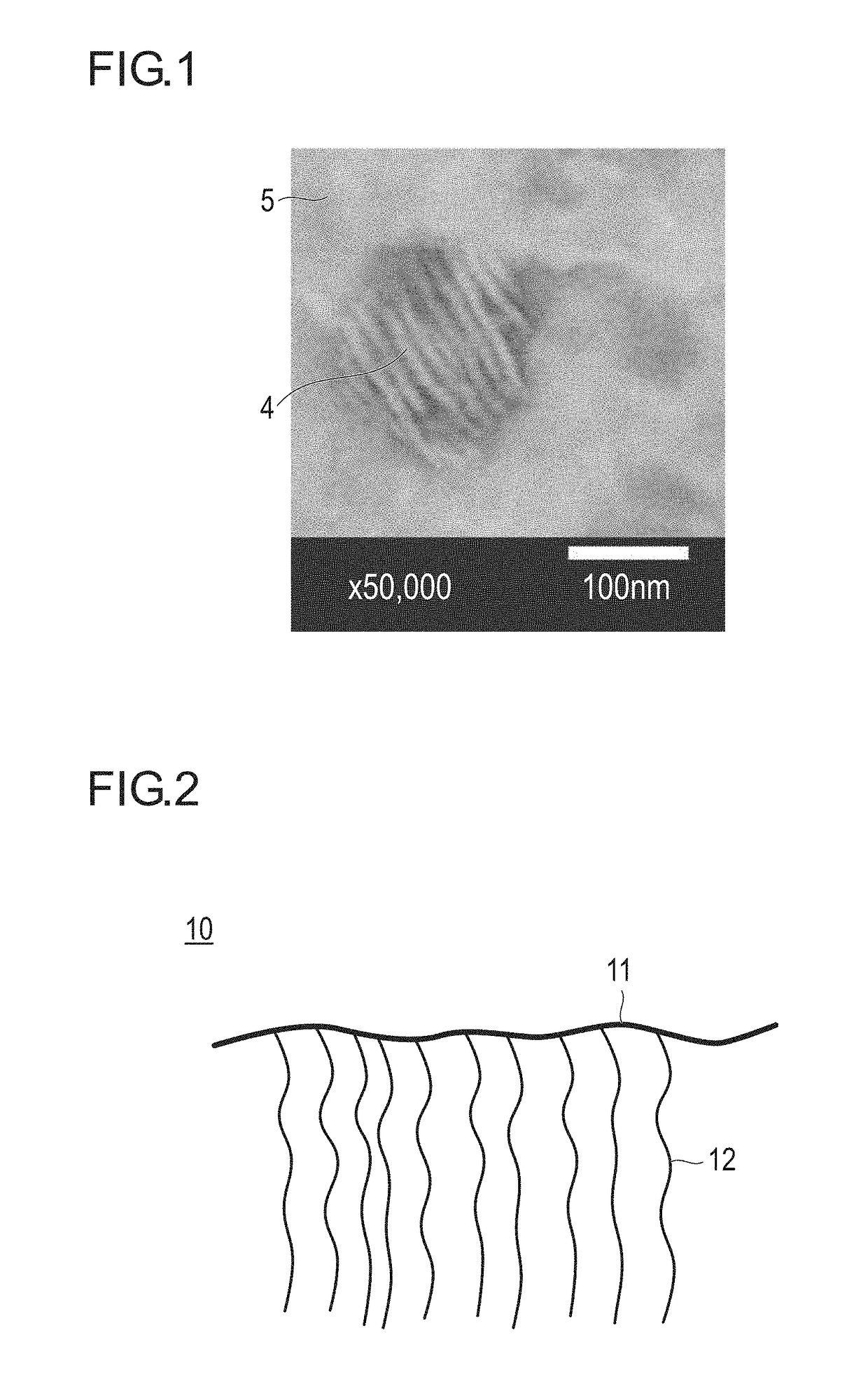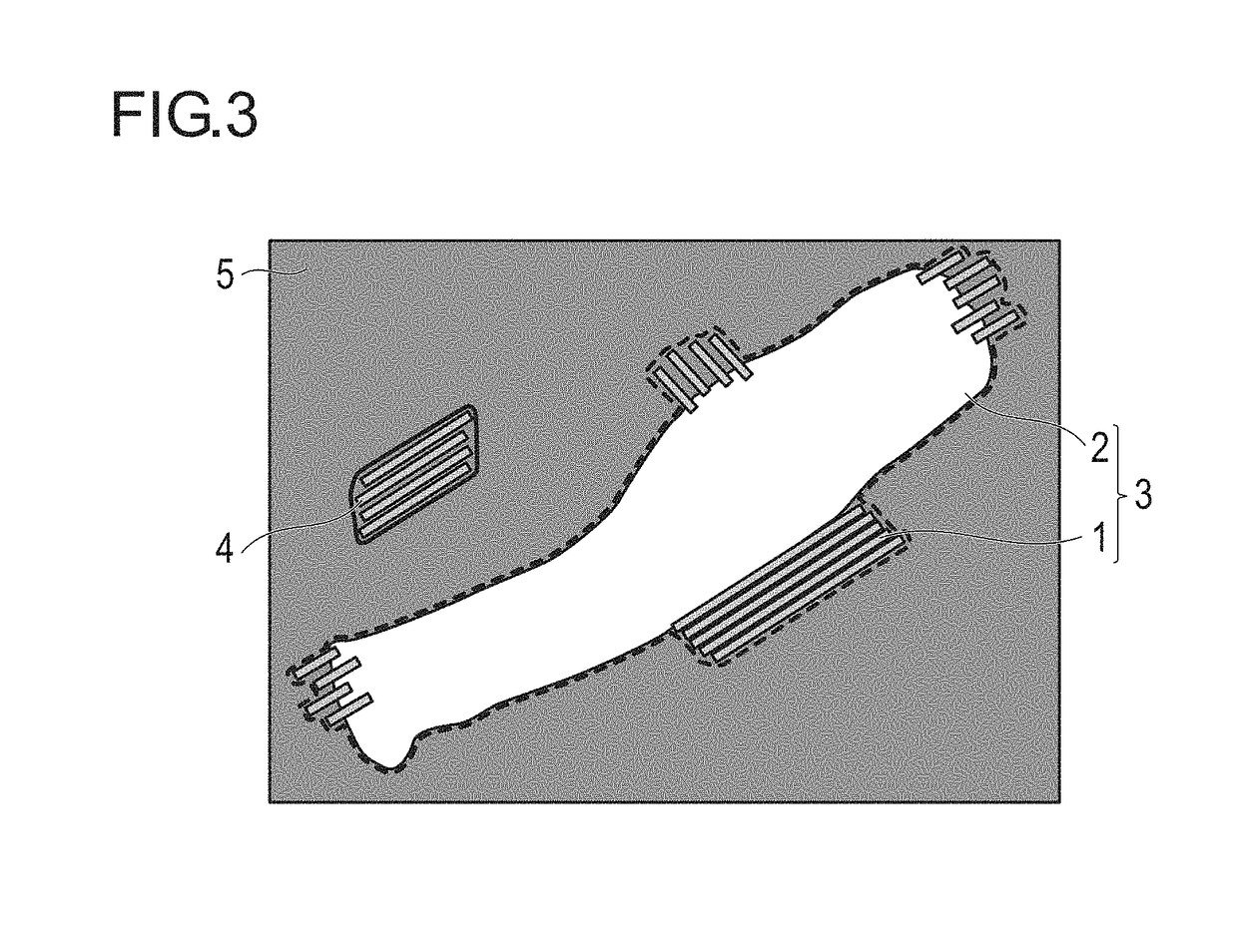Toner for electrostatic charge image development
a technology of electrostatic charge and toner, applied in the field of toner for electrostatic charge image development, can solve the problems of deterioration of document storability, insufficient post-fixing separability, and poor post-fixing separability, so as to improve low-temperature fixability, improve post-fixing separability, and improve document storability.
- Summary
- Abstract
- Description
- Claims
- Application Information
AI Technical Summary
Benefits of technology
Problems solved by technology
Method used
Image
Examples
synthesis example 1
Synthesis of Hybrid Crystalline Polyester Resin (1)
[0239]A raw material monomer of an addition polymerization resin (styrene-acrylic resin: StAc1) segment of the composition shown below including a bireactive monomer, and a radical polymerization initiator, were added to a dropping funnel.[0240]Styrene 34 parts by mass[0241]n-Butyl acrylate 12 parts by mass[0242]Acrylic acid 2 parts by mass[0243]Polymerization initiator (di-t-butyl peroxide) 7 parts by mass
[0244]Also, a raw material monomer of the following polycondensation resin (crystalline polyester resin: CPEs1) segment was added to a four-neck flask equipped with a nitrogen introducing tube, a dewatering tube, a stirrer and a thermocouple, and dissolved by heating to 170° C.[0245]Tetradecanedioic acid 271 parts by mass[0246]1,6-Hexanediol 118 parts by mass
[0247]Subsequently, the raw material monomer of an addition polymerization resin (StAc1) was added dropwise over 90 minutes while stirring the content of the flask, and the mi...
synthesis examples 2 to 4
Synthesis of Hybrid Crystalline Polyester Resins (2) to (4)
[0250]The same procedures were carried out as in Synthesis Example 1, except for changing the content (HB rate) of a resin (StAc1) segment other than CPEs relative to 100% by mass of the total amount of the hybrid crystalline polyester resin to the content shown in Table 1 below to obtain each of hybrid crystalline polyester resins (2) to (4). The number average molecular weights (Mn) and melting points (Tm) of the hybrid crystalline polyester resins (2) to (4) are respectively shown in Table 1 below.
synthesis example 5
Synthesis of Hybrid Crystalline Polyester Resin (5)
[0251]The same procedures were carried out as in Synthesis Example 1, except for using a raw material monomer of an addition polymerization resin (styrene-acrylic resin: StAc2) segment of the composition shown below and a radical polymerization initiator in order to form an addition polymerization resin (StAc) segment, to obtain a hybrid crystalline polyester resin (5). The number average molecular weight (Mn) and melting point (Tm) of the hybrid crystalline polyester resin (5) are shown in Table 1 below.[0252]Styrene 32 parts by mass[0253]n-Butyl acrylate 11 parts by mass[0254]Acrylic acid 5 parts by mass[0255]Polymerization initiator (di-t-butyl peroxide) 7 parts by mass
PUM
| Property | Measurement | Unit |
|---|---|---|
| average domain diameter | aaaaa | aaaaa |
| temperature | aaaaa | aaaaa |
| RH | aaaaa | aaaaa |
Abstract
Description
Claims
Application Information
 Login to View More
Login to View More - R&D
- Intellectual Property
- Life Sciences
- Materials
- Tech Scout
- Unparalleled Data Quality
- Higher Quality Content
- 60% Fewer Hallucinations
Browse by: Latest US Patents, China's latest patents, Technical Efficacy Thesaurus, Application Domain, Technology Topic, Popular Technical Reports.
© 2025 PatSnap. All rights reserved.Legal|Privacy policy|Modern Slavery Act Transparency Statement|Sitemap|About US| Contact US: help@patsnap.com



